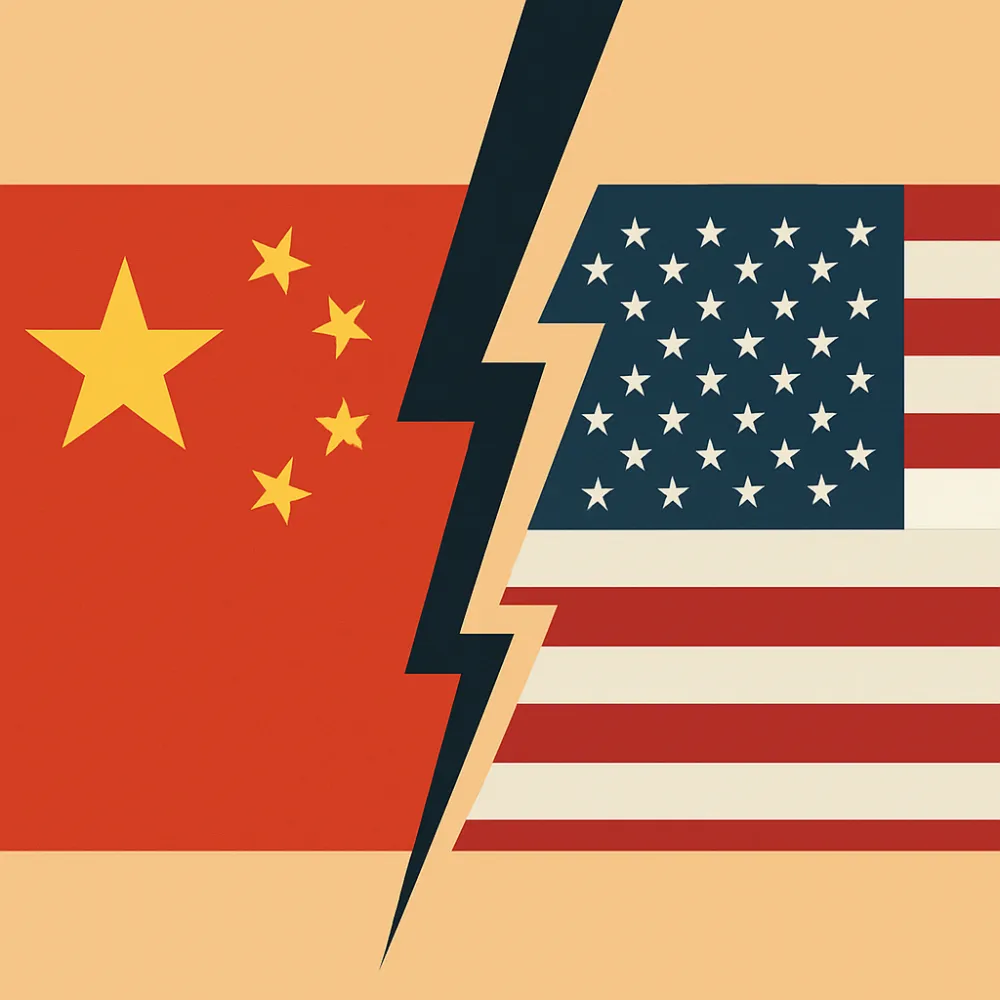
A stylized depiction contrasting the Chinese and American flags, divided by a jagged lightning bolt, symbolizing tension between the two nations.
China's Strategic Response to U.S. Trade Pressures
Trade wars between China and the United States have been ongoing for years. However, things escalated significantly in 2025, when the Trump administration became increasingly agitated by the US-China trade deficit and decided to take action. Their primary strategy focused on addressing the imbalance by imposing tariffs.
When a new wave of tariffs came into the picture, China didn’t sit idly. The Chinese administration retaliated with a series of strategic responses, sparking an epic trade war. At some point, both countries imposed tariffs exceeding 100% on select products. That aside, here’s an overview of China’s strategic responses in the recent past:
Diversification of Trade Partnerships
When faced with higher tariffs, China didn’t just retaliate – it also went on the offensive by reducing its dependence on US products. Since the fiasco began, Jinping’s government has been strengthening its ties with other regions, including the EU, and is now turning to them in matters related to manufacturing, technology, and more.
While you continue to familiarize yourself with China’s strategic responses, consider learning all you can about indices, including what is indices trading and how does it really works. This is crucial since trade wars often lead to volatility and impact stocks in specific sectors. Through indices, which are baskets of stocks, you can avoid enormous losses when stock assets from the affected sectors perform poorly.
Tariff Retaliation
Reciprocity is at the heart of China’s retaliation strategy. This issue has been ongoing for years. For instance, in 2018, Trump imposed tariffs on aluminum and steel, which affected many countries, including China. The latter retaliated with tariffs on numerous vital US products, including pork, automobiles, wine, and soybeans.
In the recent trade war, the US under Trump imposed a 10% tariff on all Chinese imports. Xi Jinping responded almost immediately, imposing higher tariffs on several commodities, including coal, liquefied natural gas, and crude oil. China primarily uses tariff retaliation to apply economic pressure and force the US to back down.
Yuan Internationalization
US trade pressures have prompted China to accelerate its investment in the internationalization of the yuan. Currently, the Chinese government is taking every measure possible to promote the use of its currency in global trade, reserves, and other areas. This is directly challenging what used to be the US dollar’s forte. Some of the strategies China is using to gain the upper hand include bilateral trade agreements in Yuan and the introduction of e-CNY, the digital yuan.
Yuan internationalization is progressing at an impressive pace. Currently, many of China’s trade deals with Iran, Russia, and numerous other countries are centered on the RMB. However, the strategy is facing challenges, primarily due to China’s stringent capital controls and the Chinese government’s limited transparency, especially regarding the supply and value of the yuan.
Recap
Besides tariff retaliation, China is leveraging a range of other strategies, including the Made in China 2025 initiative. The Chinese administration is hoping to employ this strategy to make China the leader in high-tech manufacturing. Most of these strategies are yielding positive outcomes, but only time will tell if they will sustain their effectiveness in the long run. As you wait for events to unfold, do everything you can to protect yourself as an investor, including diversifying with stock indices.


